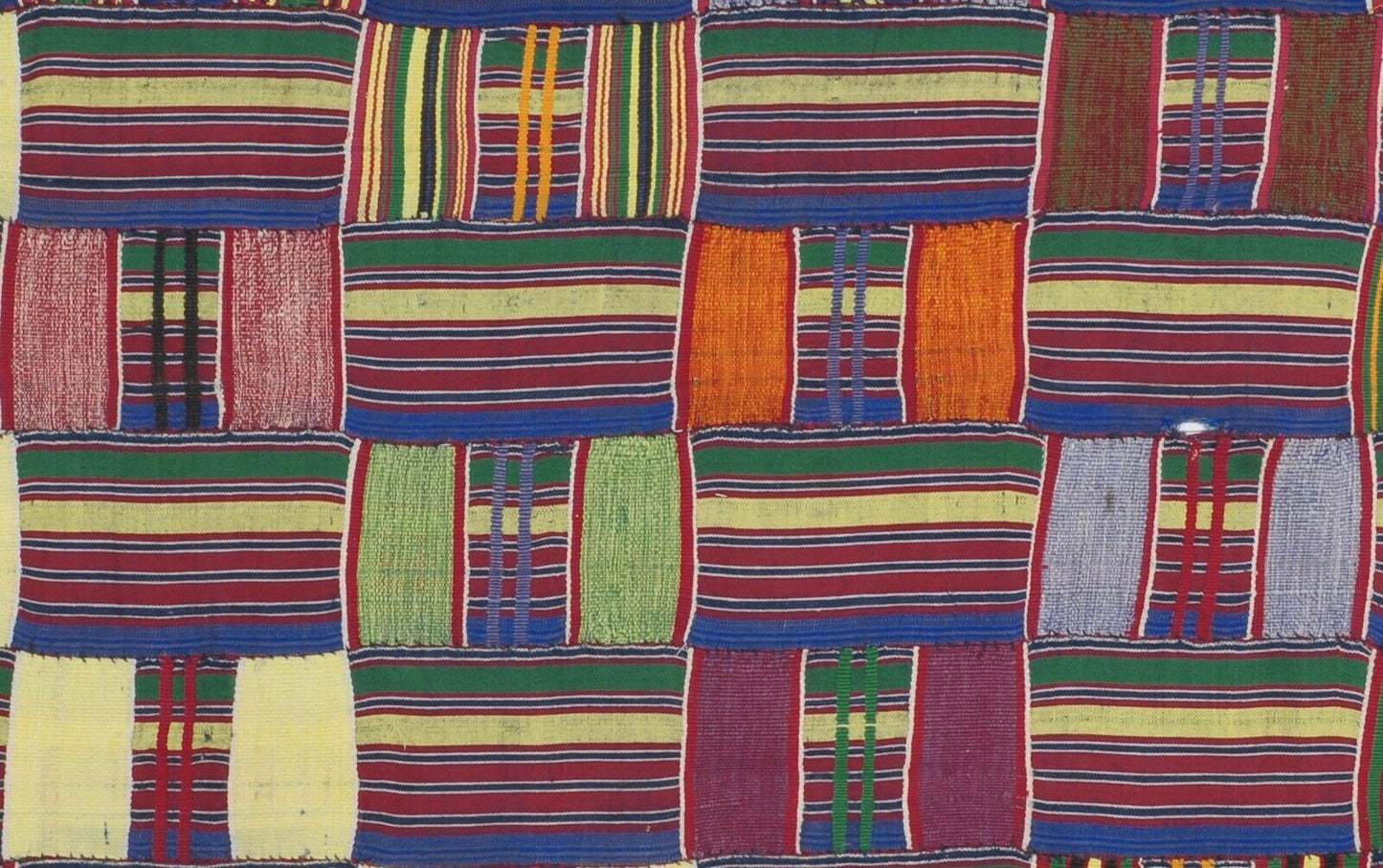Tribalgh
Vintage Handwoven Ewe Kente Cloth – Woman Size (1970s)
Vintage Handwoven Ewe Kente Cloth – Woman Size (1970s)
Item number:
SKU:SD-31065
Check shipping cost
Check shipping cost
FREE DHL shipping ( 2 - 4 working days ) to all over the world.
We combine shipping on multiple purchases!
Couldn't load pickup availability
Vintage Handwoven Ewe Kente Cloth – Woman Size, Volta Region (1970s)
Discover the elegance of this authentic Handwoven Ewe Kente cloth from the Volta Region of Ghana. Crafted in the 1970s, this vintage piece carries decades of heritage and craftsmanship, perfect for collectors or those seeking a striking decorative textile.
- Size: 69" (175 cm) × 50 ½" (128 cm) – woman size
This cloth features beautifully arranged square blocks formed by colorful weft floats. Despite its age, it remains in very good vintage condition, with a small hole, a few minor stains, and light wear that add to its authentic story and character.
What Makes This Ewe Kente Cloth Special
- Origin: Handwoven in the Volta Region, Ghana, on a traditional horizontal treadle loom by skilled Ewe artisans.
- Construction: Narrow strips meticulously woven, then hand‑stitched together to form a larger ceremonial cloth.
- Time‑honored technique: Weaving such a cloth may take several weeks to months, depending on the complexity of design.
- Use and meaning: Worn during ceremonies by Ewe people, each pattern and color block conveys moral values, oral history, social commentary, or spiritual beliefs.
- Material: Typically cotton (sometimes silk highlights), dyed in rich traditional hues for both symbolism and durability.
Historical & Cultural Context
The tradition of Kente weaving in Ghana dates back to the late 17th century. Though Ewe Kente and Ashanti Kente share weaving roots, they differ in aesthetic and symbolism:
- Ewe Kente: Known for bold geometric motifs and distinct weft‑float square blocks, often reflecting Ewe philosophical themes.
- Ashanti Kente: Characterized by rectangular shapes and symbols drawn from Akan proverbs and royal courts.
For the Ewe people, this cloth transcends fabric it visually narrates history, ethics, philosophy, and spirituality. Originally designed for ceremonial occasions among Ewe communities, it now appeals to art collectors worldwide and is cherished as wall art or decorative covers.
This genuine vintage piece is more than a textile it is a living artifact of Ghanaian art and cultural expression.
Share






